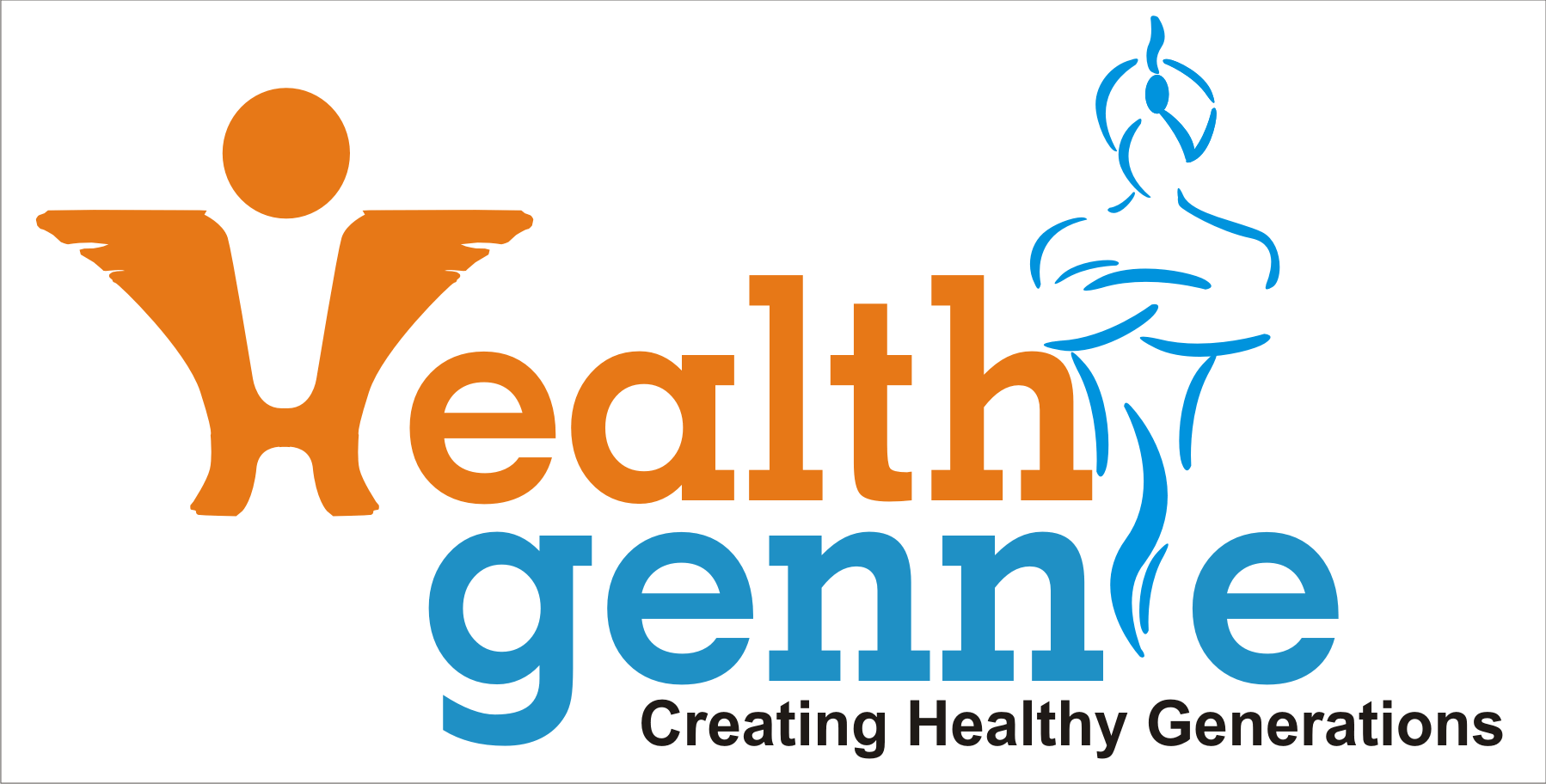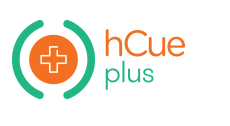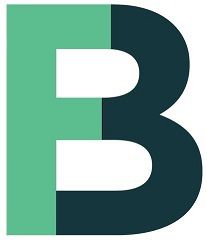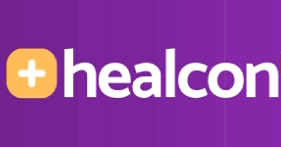What Is Patient Management Software?
Patient Management Software is a comprehensive digital solution that simplifies and improves the management of patient information and services in healthcare companies. It is a sophisticated tool that allows healthcare workers to save, access, and manage patient data in an efficient and secure manner. This program includes electronic health records (EHR), appointment scheduling, billing and invoicing, inventory management, and reporting tools.
These capabilities allow healthcare providers to access patient information and history with a few clicks, removing the need for paper records and lowering the chance of error. One of the primary advantages of Patient Management Software is its ability to enhance the overall patient experience. Healthcare workers can deliver more tailored and efficient care by allowing them to access medical information quickly and easily.
Patients can also utilize this software to book appointments, check their medical records, and connect with their healthcare professionals, making their overall healthcare experience more convenient and clear. Patient Management Software also aids healthcare firms. It improves workflows and streamlines administrative procedures, giving healthcare workers more time to focus on providing great care to patients.
It also reduces the danger of data breaches and guarantees compliance with privacy standards, resulting in greater patient confidence and pleasure. Before deciding on Patient Management Software, you should examine the size and demands of your healthcare company, cost, integration capabilities with other systems, and customer support. With the proper software, healthcare firms can increase operational efficiency, improve patient care, and drive overall success.
What Are The Recent Trends In Patient Management Software?
Patient management software has swiftly become an essential tool in the healthcare business, reducing processes and increasing patient outcomes. Patient management software trends evolve in tandem with technological advancements.
Here are some recent trends to consider when searching for the best patient management software for your practice.
1. Cloud-Based Solutions: Cloud-based patient management software has grown in popularity due to its simplicity of use and accessibility. Cloud-based solutions allow healthcare providers to access patient data from anywhere and at any time, making remote patient care and telemedicine more convenient. Furthermore, cloud-based systems provide automatic upgrades, data backup, and increased data security, making them a popular choice among many healthcare offices.
2. Interoperability: Interoperability refers to the seamless communication and data exchange across different systems and applications. In the healthcare industry, interoperability is critical for optimal patient management. Recent advances in patient management software include solutions that can communicate with other systems such as EHRs, labs, pharmacies, and other healthcare providers. This promotes a more efficient flow of information, decreasing errors and increasing patient care.
3. Artificial Intelligence (AI) And Machine Learning: AI and machine learning are changing the way patient care is delivered. Intelligent algorithms enable patient management software to evaluate enormous volumes of data, detect patterns, and generate predictions to aid decision-making. This can aid healthcare providers with illness detection and prevention, individualized treatment regimens, and better patient outcomes.
4. Mobile Applications: The usage of mobile devices has spread, including in the healthcare business. As a result, recent innovations in patient management software include mobile applications that enable healthcare providers to access patient information, connect with patients, and schedule appointments while on the go. This not only improves efficiency, but also increases patient pleasure and involvement.
5. Integration With Telemedicine: The current COVID-19 outbreak has boosted the use and popularity of telemedicine. Many patient management software solutions now include integrated telemedicine features, allowing healthcare providers to schedule virtual sessions with their patients. This enhances patient access to care while also saving time and money for healthcare professionals.
Benefits Of Using Patient Management Software
Introduction: Patient Management Software (PMS), commonly known as Electronic Health Record (EHR) software, is gaining popularity among healthcare professionals. This technology enables medical facilities to manage patient information, streamline processes, and provide better overall patient care.
We will look at the numerous benefits of adopting Patient Management Software.
1. Streamlined Appointment Scheduling: One of the most significant advantages of adopting Patient Management Software is the ability to simplify appointment scheduling. The software enables healthcare providers to manage their calendars, assess availability, and make appointments for several patients at once. This eliminates the need for manual appointment scheduling, which reduces human error and saves time for both patients and employees.
2. Improved Patient Communication: Patient Management Software contains features like secure messaging and patient portals that help healthcare providers connect successfully with their patients. This increases patient involvement and happiness since patients can easily access their medical records, schedule visits, and receive vital updates from their healthcare provider.
3. Efficient Medical Billing: Patient Management Software incorporates medical billing tools that streamline the billing process. This not only saves time and effort when generating and sending bills, but it also decreases billing errors. This enables healthcare facilities to enhance their revenue cycle and cash flow.
4. Full Patient Records: Patient Management Software allows healthcare providers to easily access full patient records, which contain medical history, lab reports, medications, and other critical information. This provides for more accurate diagnosis and treatment approaches, as well as continuity of care.
5. Improved Coordination And Collaboration: Patient Management Software enables greater coordination and collaboration among healthcare providers, both within and outside the facility. This implies that specialists, primary care physicians, and other healthcare providers involved in a patient's care can quickly access and share information, resulting in more efficient and effective treatment.
6. Easier Compliance: Patient Management Software assists healthcare professionals in adhering to legal and regulatory standards such as HIPAA. The software incorporates data encryption and access controls to keep patient information private and secret.
7. Analytics And Reporting: Patient Management Software contains analytics and reporting features that provide useful information about a healthcare facility's performance. These reports can help you find areas for improvement, optimize your workflow, and make data-driven decisions.
Important Factors To Consider While Purchasing Patient Management Software?
When it comes to acquiring patient management software, several crucial elements must be considered in order to make the best option for your medical practice.
In this buyer's guide, we'll go over the most important factors to consider while comparing various software solutions.
1. EMR/EHR Compatibility: The patient management software should work with your current EMR or EHR system. This ensures a seamless interface and reduces data entering errors.
2. Features And Functionality: Carefully study the software's features and functionality to see if they fit your specific requirements. Appointment scheduling, patient registration, billing and invoicing, insurance verification, and patient communication tools are some of the most crucial aspects to consider.
3. Customization And Scalability: Each medical practice is unique, and their patient management software requirements may differ. Look for a system that allows you to customize the program to meet your practice's specific demands. Additionally, examine the software's scalability, as your practice may expand in the future, and you want the software to be able to accommodate that growth.
4. Usability: Any software must have a user-friendly and intuitive interface to be used effectively. Make sure to test the software's user experience before making a purchase. This can help you assess whether the software is simple to use and understand.
5. Security And Compliance: When working with sensitive patient information, it is critical to ensure that the software follows tight security protocols and conforms with applicable data privacy rules such as HIPAA. Ask about the software's security protocols and certifications.
6. Customer Service And Training: A reliable customer support team and training resources are required for the software's successful implementation and continuous use. Inquire about the degree of customer service provided and any training resources available.
7. Cost And Return On Investment: While software costs are essential, they should not be the only deciding factor. Consider the long-term benefits and return on investment (ROI) that the software can provide to your practice.
8. User Feedback And Recommendations: Conduct research and read reviews from other medical practices that have used the software to gain a better grasp of their experiences. Also, get recommendations from industry leaders and coworkers. Keeping these elements in mind while assessing patient management software options will allow you to make an informed decision and select the finest solution for your medical practice.
What Are The Key Features To Look For In Patient Management Software?
When searching for Patient Management Software, there are several critical elements to examine to ensure that you are selecting the best solution for your medical business.
These features not only aid in efficient patient management, but also increase overall productivity and patient happiness.
1. EHR Management: The capacity to store and manage electronic health records is the most important function of any Patient Management Software. This comprises a patient's medical history, diagnosis, prescriptions, test results, and other essential information that can be accessed at any time and from anywhere. Make sure the program offers easy-to-use EHR administration tools to ensure seamless functioning.
2. Appointment Scheduling: Efficient appointment scheduling is critical to any medical practice. Look for software that enables you to book and manage appointments smoothly. This should provide features like appointment reminders, rescheduling, and calendar integration to avoid conflicts.
3. Patient Registration And Check-In: A decent Patient Management Software should allow patients to simply register and check in. This saves time for both patients and staff, resulting in shorter wait times and a better patient experience.
4. Billing And Payment Processing: Select software that includes integrated billing and payment processing capabilities. This will assist streamline the billing process and reduce the possibility of errors. It should also enable for easy payment tracking and invoice generation.
5. Customisation And Integration: Every medical practice has unique requirements and workflows. Look for software that may be customized and integrated with other systems like a lab or pharmacy. This will ensure a smooth flow of information and a productive workflow.
6. Reporting And Analytics: Reporting and analytics services provide useful information about your practice's success. It enables you to monitor patient demographics, appointment trends, revenue, and other key variables. This information can help you find areas for improvement and make data-driven decisions.
7. Secure Data Storage: With the rise of cybercrime, it is critical to select Patient Management Software that guarantees the security and privacy of patient information. To avoid data breaches, ensure it has suitable encryption mechanisms and firewall protection.
8. Mobile Compatibility: In today's digital age, it's critical to have access to patient data on the go. Look for software that is mobile device friendly, so you may access patient information at any time and from any location.
9. Patient Engagement: Select software that includes patient portals, appointment reminders, and online forms. This encourages patients to participate in their care, enhances communication, and eventually leads to better health outcomes.
10. Training And Support: Last but not least, ensure that the software vendor provides appropriate training and continuous support for the program. This ensures that you and your staff can utilize the program successfully and efficiently, maximizing its benefits.
Why Do Businesses Need Patient Management Software?
In today's fast-paced and technologically advanced world, firms in the healthcare industry rely largely on efficient and streamlined operations to provide high-quality services to their patients. Here's where patient management software comes in. Patient management software is an essential tool for healthcare firms because it allows them to manage and organize patient information, appointments, treatment plans, and billing in a single system.
With the growing demand for better and faster healthcare services, patient management software has become a must-have for all types of healthcare enterprises, from small clinics to huge hospitals. One of the key advantages of using patient management software is the ability to automate administrative activities. This includes organizing appointments, maintaining patient information, and managing invoicing and payments.
With all of these processes automated, organizations may save time and resources while focusing on providing outstanding patient care. Furthermore, patient management software facilitates communication and collaboration among healthcare personnel. It enables clinicians, doctors, and other staff members to access and update patient records in real time, from anywhere.
This allows for a more efficient and accurate conveyance of information, resulting in better patient care and treatment. Another important element to consider is the confidentiality and privacy of patient data. Patient management software provides advanced security features such as data encryption and regular backups to secure sensitive patient information from cyber attacks. This not only assures HIPAA compliance, but also fosters patient trust.
Businesses in today's highly competitive healthcare market must keep ahead of the competition in order to attract and retain patients. Patient management software enables organizations to evaluate their performance, identify areas for development, and implement changes to improve the overall patient experience. It also gives significant information about patients' demographics, interests, and patterns, allowing businesses to adjust their services accordingly.
How Much Time Is Required To Implement Patient Management Software?
The time required to implement patient management software varies based on the program and the healthcare facility's demands. However, most implementations can be completed in a few weeks or months. The initial setup and installation of the software normally takes a few days, followed by system tweaking to fit the healthcare facility's specific requirements.
This could include customizing workflows, setting user roles and rights, and integrating the program with other systems. Staff training on how to efficiently use the software is also an important part of the installation. Depending on the healthcare facility's choices, this could include both in-person and online training sessions. Training might be anything from a few hours to a few days, depending on the software's complexity and team size.
Another issue that can influence implementation time is data migration. If the healthcare facility is moving from an existing system, the old data must be moved to the new program. This procedure can take anything from a few days to many weeks, depending on the volume and complexity of the data. Finally, there may be a time of testing and troubleshooting to confirm that the software is functional and meets the demands of the healthcare facility.
What Is The Level Of Customization Available In Patient Management Software?
When it comes to patient management software, one of the most essential considerations is the level of customisation offered. This can have a significant impact on the software's overall usability and efficiency. Let's look into this further to help you make an informed decision during the software choosing process. First and foremost, it is critical to recognize that not all patient management software is equivalent in terms of customisation. Some software may provide a high level of customization, but others may have little possibilities. Before making a decision, you should thoroughly consider your individual wants and requirements.
However, the degree of flexibility offered in patient management software might vary in terms of:
1. User Interface: This is the design and layout of the software. Some applications may have a conventional, fixed interface, whilst others may allow for customization of the layout, color schemes, and typefaces. This can help users who have special preferences or need a certain level of accessibility.
2. Workflow: The software's workflow can be adjusted to meet the specific needs of various healthcare facilities or practices. This can include the ability to add or remove steps from the patient management process, develop custom forms or templates, and interact with other software systems to provide a more streamlined workflow.
3. Reporting And Analytics: A good patient management software should be able to provide extensive reports as well as give analytics to help with data analysis and decision-making. Customization options in this area may include the ability to generate bespoke reports based on certain criteria, as well as the level of detail and presentation of the data.
4. User Permissions: Depending on your practice's structure, you may want to assign different levels of access and rights to different individuals. Good patient management software should allow you to adjust user permissions and limitations, so that important patient information is only accessible to authorized individuals.
5. Integration: In today's digital landscape, connecting to other software systems is becoming increasingly crucial. Patient management software that allows for customization in terms of integration can give a more seamless user experience and data flow between systems.
Which Industries Can Benefit The Most From Patient Management Software?
Patient Management Software, or Practice Management Software, is a comprehensive electronic solution that simplifies and streamlines administrative and clinical operations in healthcare facilities. It has a variety of functions, including appointment scheduling, patient registration, medical billing, electronic health records, and more. This sophisticated tool has shown to be quite valuable to a variety of sectors in the healthcare sector.
In this buyer's guide, we'll look at which sectors can profit the most from using Patient Management Software.
1. Hospitals And Medical Centers: Hospitals and medical facilities are among the key users of Patient Management Software. These clinics see a large number of patients each day, necessitating effective management of patient data, appointments, and medical billing. This software enables hospitals and medical facilities to streamline operations, decrease paperwork, and improve overall patient care.
2. Private Clinics And Solo Practitioners: Patient Management Software can benefit both private clinics and solo practitioners. These tiny healthcare offices have limited staff and resources, making it difficult to keep up with administrative chores. Patient Management Software enables them to streamline their practice by managing appointments, automating invoicing, and keeping electronic health records, allowing them to concentrate on providing exceptional patient care.
3. dentistry Clinics: Patient Management Software is not only useful for medical businesses; it can also be quite valuable for dentistry clinics. Dental clinics can streamline their everyday operations and increase patient communication by using services like patient scheduling, treatment planning, and insurance verification. Furthermore, patient management software includes particular dental templates and forms, making it easier to manage dentistry-specific data.
4. Mental Health Facilities: Using Patient Management Software can be quite beneficial for mental health facilities. These institutions frequently handle sensitive patient information, so having a safe and well-organized system in place is critical. Patient Management Software offers safe data storage and simple access to patient records, allowing mental health professionals to give more individualized and efficient care to their patients.
5. Chiropractic And Physical Therapy Businesses: Just like dentistry offices, chiropractic and physical therapy businesses can benefit from patient management software's unique capabilities. These industries have specific requirements for treatment plans, follow-up consultations, and insurance claims, which can be efficiently managed using this software. It can also aid in tracking patient progress and producing detailed reports for insurance purposes.
Conclusion
To summarize, selecting the best patient management software for your medical practice can be a difficult endeavor, but with the correct knowledge and assistance, you can make an informed selection that will help your business in the long run. Throughout this buyer's guide, we've discussed a variety of factors to consider when comparing software alternatives, such as features, pricing, integration, and customer service.
Before you start looking for patient management software, you should clearly describe your goals and objectives. This can assist narrow down your options and guarantee that the software you choose meets your specific needs. We also advocate looking into different possibilities and obtaining demos and trials to have firsthand knowledge with the product.
This will help you better grasp its capabilities and how it might benefit your practice's operations. When making your decision, remember to take into account the implementation and training processes, as well as continuous assistance. A reputable vendor should have a smooth onboarding process and give enough training and support to help you get the most out of the program. Finally, keep in mind that patient management software represents an investment in the success and efficiency of your operation. While pricing is obviously important, it should not be the only determining factor.
Instead, focus on the features, integration, and support that will add the most value to your company. We hope that this buyer's guide has provided you with enough information to confidently select the best patient management software for your clinic. Remember to thoroughly weigh your options, assess your individual requirements, and favor value over price. With the appropriate software, you may streamline your everyday operations, increase patient care, and eventually expand your practice.






















